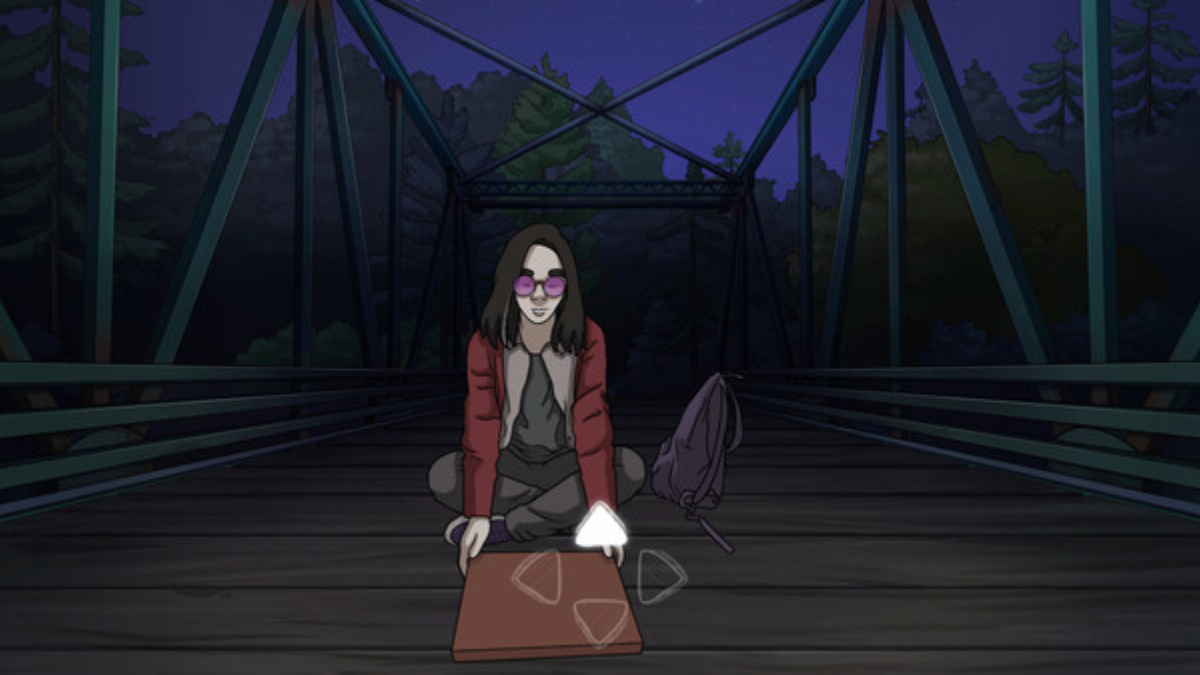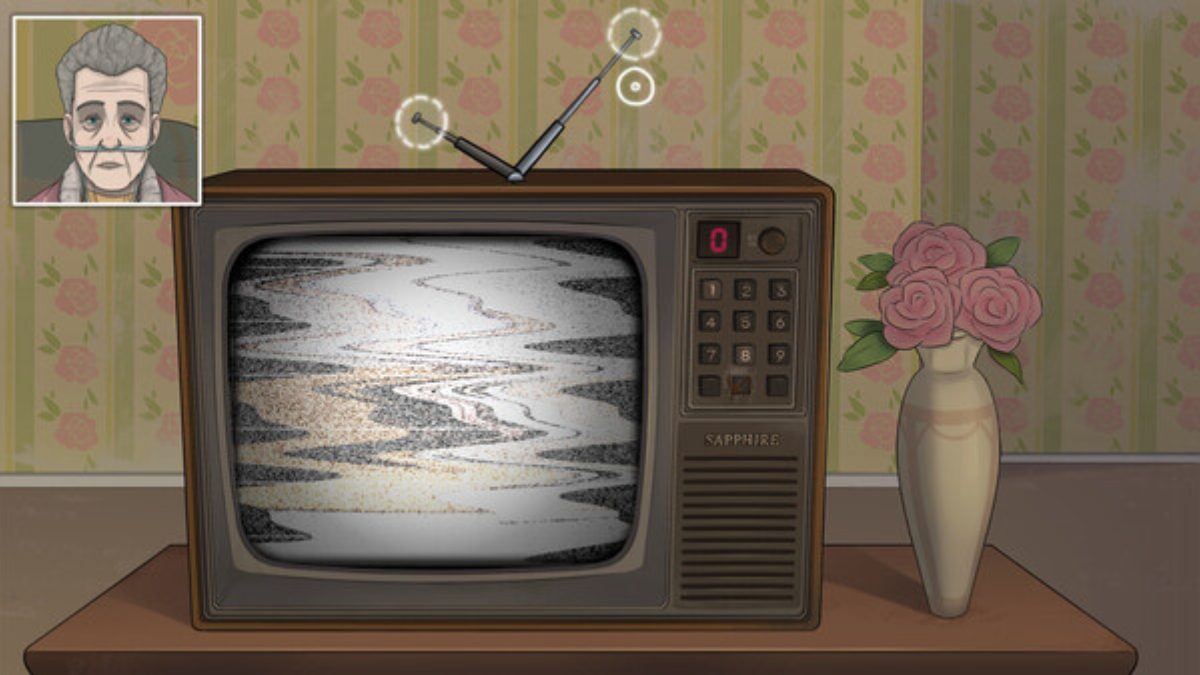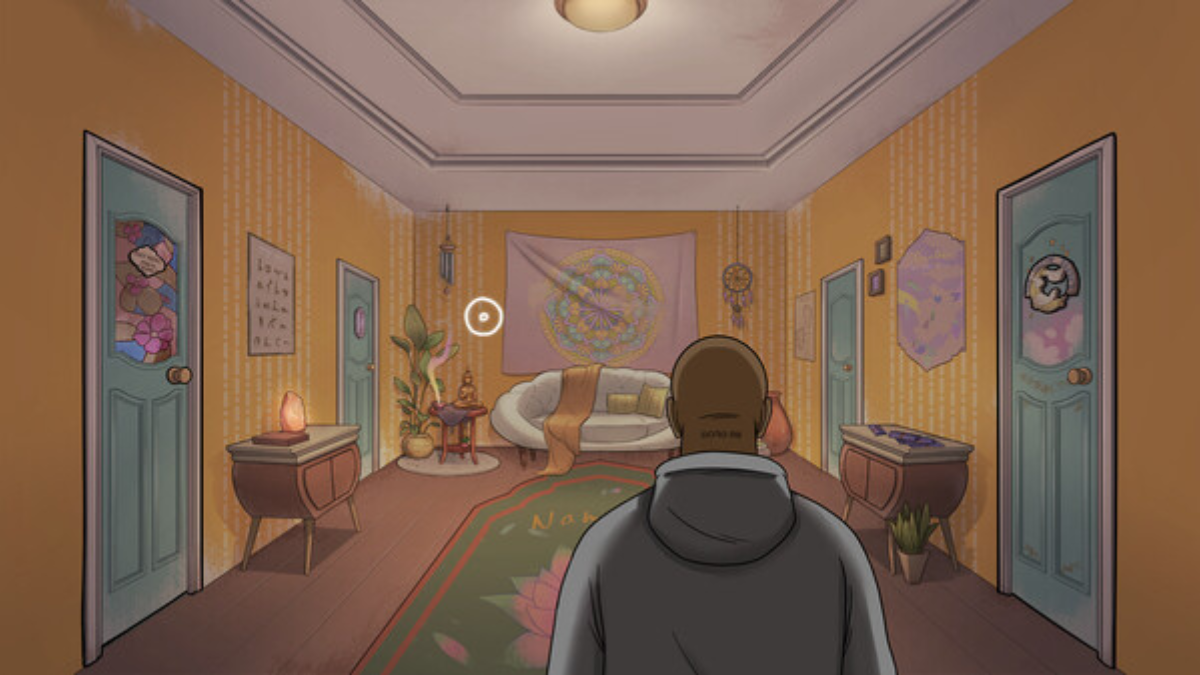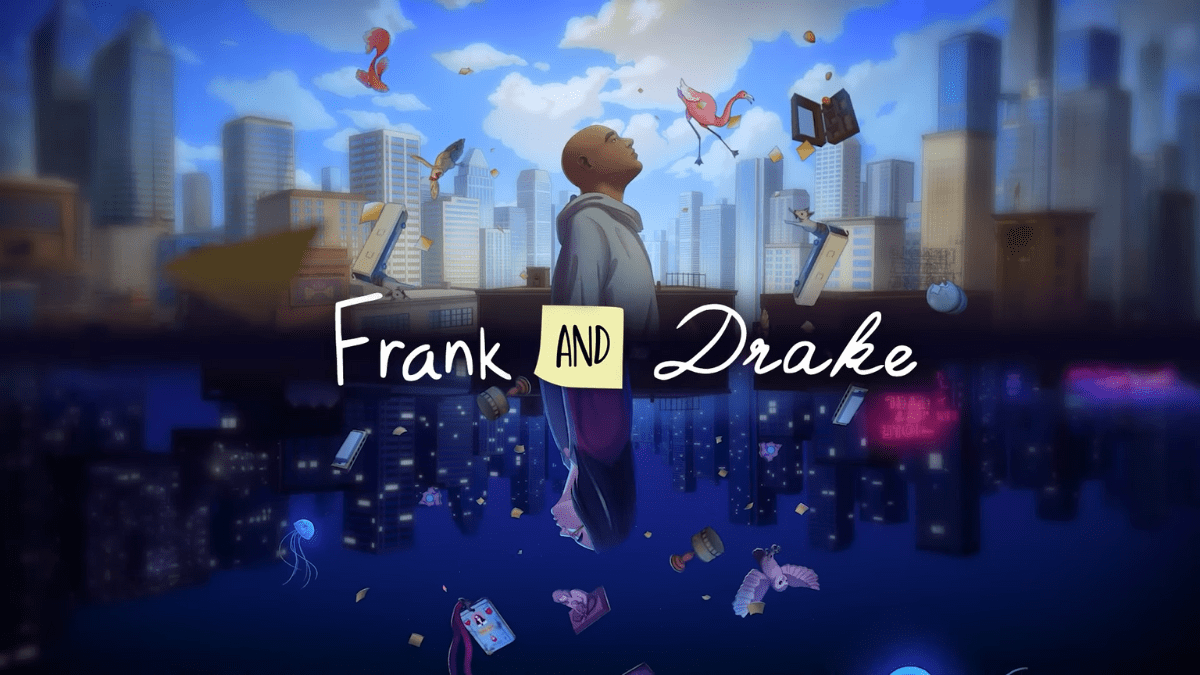Boy, where do I even start? Frank and Drake is going to be a tough game to articulate in a written review, only because most of it should be experienced absolutely blind. Inevitably, I’m going to be bringing up some very mild spoilers. Though I selfishly want curious gamers to read the whole review, I’ll plainly say this: if you’re a fan of weird, meaningful narrative-based games, purchase Frank and Drake as soon as possible. I won’t even bury the lede; stop reading now and just trust me on this. For those who aren’t quite as willing to go on blind faith alone and don’t mind minor details, let’s get into it!
The best way to introduce Frank and Drake, I think, is to relay a brief anecdote. My partner happened to walk into the room while I was watching the ending of my first playthrough, and she stared at the TV, took out her earbuds, and with an intrigued but unsettled look, quietly said, “…What the hell is going on?” At first, the game presents itself as a soothing, relaxing experience. You start out as Frank carrying groceries back to his apartment, bumping along in a crowd of busy people. Punctuating this is easygoing lo-fi music (persistent throughout the majority of the journey) that eases players into the first batch of clickable items. There’s zero explanation or context; you’re plopped into this gorgeously rotoscoped world and are then encouraged to start clicking on whatever highlighted objects tickle your fancy.
While the initial circumstances seem mundane, the unique visual style adds so much color and personality to Frank, the surrounding world, and even the flavor text that pops up while you’re pointing and clicking. Everything looks and feels lived-in and authentic; as if you could imminently visit the sprawling, graffiti-coated alleys and dilapidated parks of “Oriole City.” The very first thing that caught my eye was a worn black belt with a skull on the buckle. I was expecting a description that simply read something like, “A skull on a belt? Whoever wore this obviously had their goth phase last way beyond high school!” You know, the kind of flavor text people would rather tune out or skip so they can get back to the game. Here’s what was actually presented to me, verbatim: “A 2-in-1. To remind you how short time is and how loose your pants are.” That’s the moment I fell in love.

Rather than serving as inconsequential world-building pieces, everything you can interact with reveals a reflection of who Frank is as a person — how he feels about the world around him, as well as drip-feeding purposeful tidbits regarding the formative relationships in his life. Most importantly, what you come to realize is that something isn’t quite right in Frank’s world. It’s subtle, at first, until it’s decidedly not. And that’s when he’s informed that he’s getting a new roommate — Drake, of course.
Frank and Drake develop an interesting bond. Frank has a busy day schedule, trying to sort through his foggy, disparate memories as an amnesiac who believes his current misfortunes aren’t exactly unintentional. As Frank plays detective, Drake himself can not only see strange symbols and interact with objects in a way others can’t, but he also has a condition that forces him into a life of perpetual darkness, only going out at night to make a living. The two are destined to never meet — communicating solely through sticky notes they leave one another throughout their shared apartment. Depending on the choices players make, Frank and Drake’s relationship can be friendly, neutral, or distant. This system may seem standard enough, but I was shocked by how earnest it came across (and how much it factored into the overall plot).
Where its contemporaries allow players to project a bit of their own personalities onto playable characters, Frank and Drake is steadfast in letting you know that, no, these characters’ personalities are their own, but you’re allowed to guide them according to what they would want. In this way, Frank and Drake (in my first playthrough, anyway) found solace in one another where they both felt they had nobody else who understood them. There was something deeply rewarding about seeing that play out over the six days players are given before one of the six endings unavoidably arrives. The bulk of the game’s runtime is anchored almost exclusively by the titular duo. Other characters make the rare appearance, but both Frank and Drake take center stage, fitting perfectly into the ever-present isolation and loneliness underpinning their lives.

In between “mundane tasks” (bolstered by the game’s strong writing and finding different ways to present new information), players will also be treated to a wide assortment of puzzles and mini-games. It’ll take multiple playthroughs to experience them all, but it’s well worth it due to the sheer variety of activities alone. I took a hard break from the escalating stakes of the main plotline to do an in-game crossword puzzle for about 20 real-life minutes, and I regret absolutely nothing. A welcome spin on the traditional point-and-click style, there’s always a fun, engaging diversion to keep players alert. One particular puzzle that stood out early on involved Frank fixing the blinds to accommodate his incoming roommate. Rather than pressing a button and having the blinds close automatically, players instead will have to carefully arrange notches on either side so that the blinds are symmetrical from top to bottom. (I promise it plays better than it sounds.)
There’s not much I can specifically say about the goings-on in the main story (nor would I want to in an effort to preserve the game’s many surprises), but I will say that you aren’t ready for the ride that is Frank and Drake. If I could go back in time and tell myself the insane ending I got before Past Dwayne even finished the first in-game day, my time-and-space-accurate self wouldn’t have believed it. I love it when games catch me off-guard, and this is certainly one where the rug was pulled from beneath me many times.
Frank and Drake gave me a renewed appreciation for the loved ones in my life — a rollercoaster of serenity, sadness, paranoia, and regret, depicted in a way that hit closer to home than I thought it would. It’s one of those “released at the perfect time” games where interpersonal communication with others took a drastic hit due to, uh… certain life-changing world events. As a result, I found myself realizing, even as a proud introvert, the importance of friendship and love in a world that may not exactly operate the way you sometimes wish (and might actively work against you). Even through sticky notes, Frank and Drake ended up having a bond that made me feel delightfully warm inside, especially as two people on the fringes of society who need that interpersonal push even if they don’t — or can’t — recognize that fact themselves.

I may even argue that Frank and Drake feels like a life simulator at times — not unlike The Sims if the developers were all going through some form of personal tragedy and wanted to do more than allow players to play Rock, Paper, Scissors with the Grim Reaper to bring their dead dog back to life. Yes, there’s a lot more happening than I’m letting on, but the way both Frank and Drake interact with the world — and each other — feels so real. …Well, outside of how players engage with some of the puzzles, but that’s when you’re supposed to suspend your disbelief!
Granted, I’m not saying that there isn’t a blemish or fault in sight. A rocket is firmly strapped onto the last day or two of the game when we’re talking about pacing. The first half felt more deliberately paced, which made the breakneck speed toward the end a little jarring. I also wanted more time with the characters, but it could easily be argued that the sentiment flies in the face of the core themes and messages. Some of the in-game text is disastrously small, even with an oddly inconsistent option to blow up some text for readability.
But as those credits rolled and I felt that need to play through the game again to make better choices and understand some of the plot threads that were artfully left ambiguous, I knew that Frank and Drake had done exactly what it wanted to do. The unraveling of a conspiracy is a web that isn’t so easily detangled, after all.
This review is based on the PlayStation 5 version of the game. A copy was provided for review by Chorus Worldwide Games.











Published: Jul 19, 2023 09:00 am